Today I realised one of my long-held ambitions – a visit to Ryans Beach, where the rusted ruin of the 127 ton steam ship Hananui II still lies. The beach is not open to the public, so I had begun to despair of ever bringing the fascinating story of this ship to you, but I was luckily able to obtain permission to view the wreck from Penguin Place who manage the area. The only condition was that I was to make it very clear that there is absolutely no public access to this beach. So please don’t trespass here!
I took a leisurely morning drive out past Portobello, saluting Pudding Island and Harbour Cone as I passed. The rising sun was in turns both beautiful and directly in my eyes. At Harwood I followed the sign up Pakihau Rd and soon arrived at Penguin Place.
Typical Dunedinite that I am, I’ve never actually been here. I’d always imagined it to be a slick tourist trap but in fact it’s a rustic friendly little place with a clear focus on conservation. The income provided by tourist visitors funds the conservation program, allowing the control of predators and rehabilitation of sick birds among other things. There is a huge old stump with a viewing platform carved into it which allows visitors to look out over the harbour and out to Aramoana.
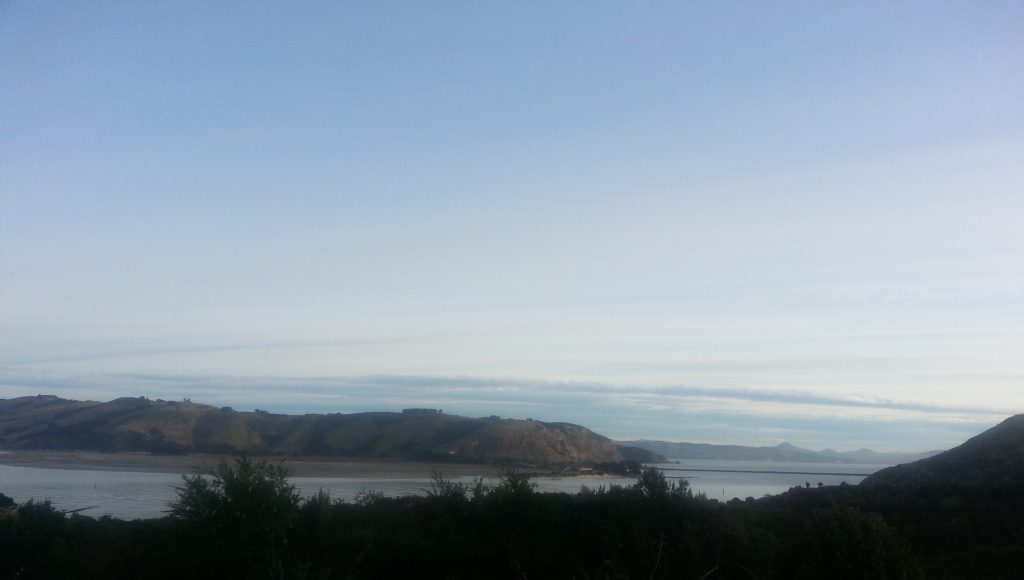
Unsure what to do next, I approached the first person I saw, who happened to be Brian, a member of the McGrouther family which owns the land and set up the Penguin Place conservation project in 1985. He kindly offered to take me down to the beach, so I hopped in his truck alongside his two excitable Jack Russells, Gemma and Lucky.
We trundled off into the reserve and over the hilly paddocks. This is still a working sheep farm, and the conservation effort is designed to work in harmony with the farming business – challenging the common idea that farmers and conservationists are naturally opposed in their goals.
We parked above the beach and scrambled down the steep slope to the sand below. The beach was pristine on this sunny morning, with the remains of the Hananui II shadowed by the imposing bulk of Quoin Cliff above. Having seen the name “quoin” applied to both this and another headland further south, I wondered if it was the name of an early settler, but it turns out that a quoin is a building term for a large block at the corner of a wall. And it’s pronounced “coin”, not “kwo-win” as I’d been foolishly calling it.

Being closed to the public, the beach was absolutely untouched by human feet, but it was apparent that non-human feet had visited this quiet sanctuary. About a dozen penguins had emerged from the dunes and made their way down to the sea, judging by the evidence they’d left behind. The declining penguin population needs this secure place to breed without being disturbed by pesky people.

Further down the beach was the distinctive scuffy trail of a seal.
But now let’s turn to the true reason for our visit! It is a long and winding tale that brought the Hananui II to her final resting place on this quiet little beach, and it began with third generation whaler Herbert Francis Cook, born in Russell. He decided in 1910 to build a whaling station at Whangamumu, just outside the Bay of Islands, and travelled to England to order the Hananui II which was built at Middlesborough.
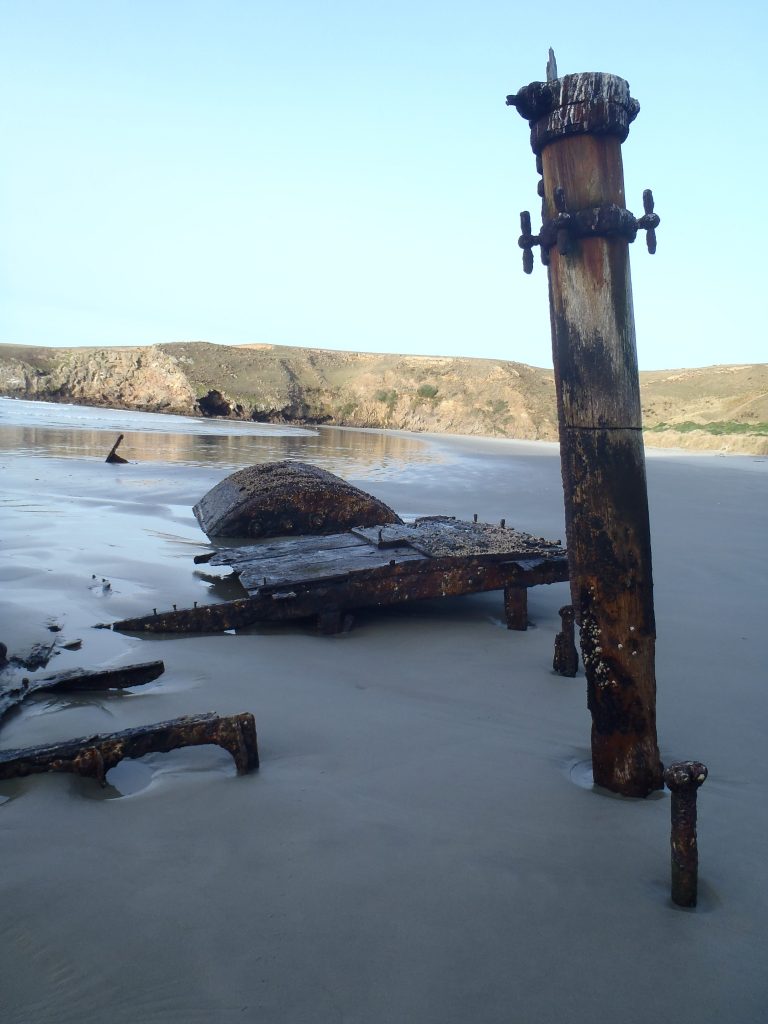
In her first season she took thirteen whales. In order to more quickly despatch the poor beasts, each harpoon fired from the gun at the prow was equipped with a bomb which would detonate when it struck. Even so many whales took some time to die and the boat would often be tossed around considerably, being not much larger than the average whale. Six whales were harpooned but managed to escape. This all sounds horrifying to our modern ears, but a hundred years ago this was lauded as a great success.

Four years later saw the outbreak of the First World War, and our government faced a dilemma when the German raider SMS Wolf laid two minefields off the New Zealand coast. No minesweeping equipment or personnel existed in New Zealand at the time, and the mines sunk two ships before decisive action could be taken.
Only four suitable vessels could be found in the country, one of them being the Hananui II. Due to the absence of trained personnel her usual crew had to be used, and in February 1919 she was the third ship sent out to search for the deadly bombs. She found no mines in her three months of service, although ironically her crew had found one in 1918 prior to being called into service. It was carefully towed into port in Russell where it could be detonated. Captain Herbert Cook received a medal for his contribution to the war effort.
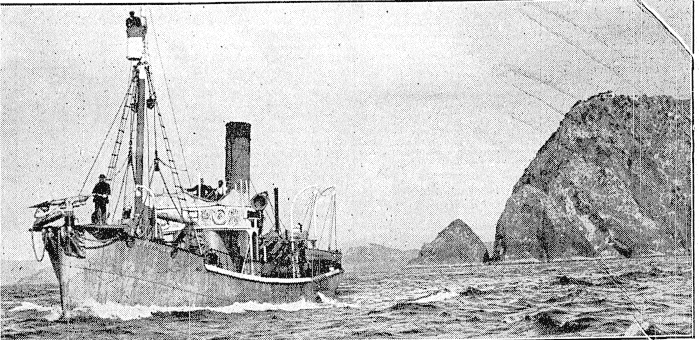
Military interlude over, it was back to the business of whaling. The whaler’s best year was 1925, when she captured 74 whales. But the trade became less profitable as whales became scarcer and the value of whale oil declined. The whaling station closed and the Hananui II was sold in 1935 to interests in Bluff for the purpose of oyster fishing. After the closure of the Whangamumu station, whaling in New Zealand effectively came to an end.
It seems she never plied the oyster trade and was instead converted into a fishing trawler. In 1937 she was bought by the National Mortgage & Agency Company Ltd. and brought to Port Chalmers. Now instead of an innovative new whaling gun, she was equipped with an innovative new trawling net.
Having weathered one World War (as an active participant no less!), the Hananui II was fated to meet her doom in the midst of another. On the dark and foggy night of December 2 1943 she was returning from a fishing trip off Wickliffe Bay. Her master, Captain John Black, believed he was making for the harbour entrance when he instead struck the sandy beach at about 5am. It was pure luck that he did not instead hit the rocky headlands at either end of Ryans Beach, and so the ten crew members were all able to land safely and walk over the hills to Portobello.
The first re-floating attempt seemed promising but just as the ship began to lift from the sand the tow line snapped and she settled firmly back down. Further attempts were unsuccessful and she was eventually abandoned, her cargo of fish thrown overboard and as much as possible of her equipment salvaged. Captain John Black was fined £25 for failure to make adequate precautions for the weather and inability to keep track of his position. However, he was not disqualified from captaining ships in the future.

What an embarrassing end for a ship that had battled sea monsters and tangled with minefields. Still there is a sort of poetry in the fact that a vessel that once terrorised creatures of the deep is now being slowly overcome by the sea, providing a home for barnacles and limpets. On the mast where whale spotters once scanned the sea for their prey, sea birds now perch and preen.
Having seen the wreck, perhaps for the only time in my life, it was time to climb the steep slope back up to the truck.
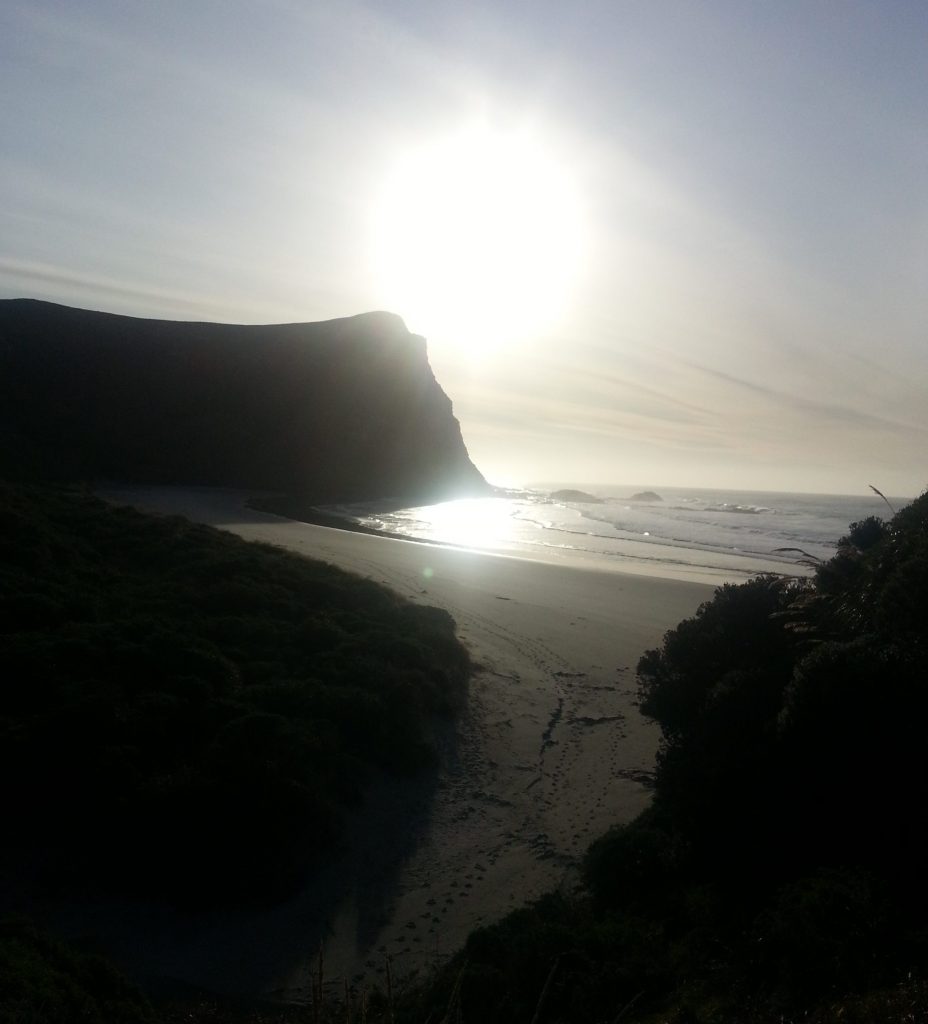
As we headed back we took the opportunity to muster the sheep into another paddock. Soon they will be having their scans to see who is carrying lambs and who will be having twins. Any sheep that aren’t carrying lambs will have an uncertain future, so good luck sheep!

Then I got another treat, a detour up on to Quoin Cliff to look at Ryans Beach from above! It’s a magnificent view that extends to Victory Beach (where another unfortunate steamship resides) and Mount Charles beyond. The wrecked Hananui II looks tiny from up here.

Returning I got a good view over the replanting efforts behind Pipikaretu Beach which will eventually provide shelter for the penguins and protection for the delicate dune formations. On the way I spotted several pukeko, a kingfisher, a hawk and also a lone seal lumbering towards the rocks. The wildlife was certainly on full display today, even if the penguins were all out fishing.

Back at the car park I farewelled my trusty guide. Many thanks to Brian and Lisa and the rest of the Penguin Place crew for providing this wonderful wildlife sanctuary and for allowing me to visit the historic wreck.
References:
Story: Cook, George Howe and Cook, Herbert Francis
DECLINE IN WHALING New Zealand Herald, Volume LXXII, Issue 22144, 25 June 1935, Page 10
NEW TRAWLING SYSTEM Press, Volume LXXIII, Issue 22050, 25 March 1937, Page 23
TRAWLER ASHORE Evening Post, Volume CXXXVI, Issue 134, 3 December 1943, Page 4
STRANDING OF TRAWLER Press, Volume LXXX, Issue 24174, 5 February 1944, Page 6
Otago Daily Times, December 2-10 1943

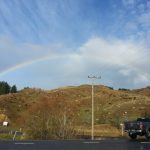
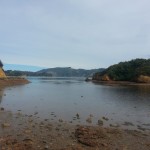

My family often visited Ryan’s Beach in the 1950s fishing and picnicking. We lived in Broad Bay and my friend and I often biked from there to Ryan’s Beach taking our lunch. Access was possible, just climbing fences and walking across the paddocks. The Hananui in those days was more recognisable as a ship than it is now – it was a rusting hulk. At low tide it was possible to touch it.
What a great story and stunning pictures. Penguin Place sounds a good place to visit.
Hi great story. Ryans Beach is not private or closed. Access along the clifftops from Victory Beach or by following Pipikaretu Road which is a legal unformed road.
Cheers Lloyd
Hallo I live om Norway and find a old pictures og the boat Hananui .II. The pictures is signed by W. Parry &Son. Is this livvidde og this boat you are writing about here??
It could be! I would love to see the picture if you are able to send it to me at amanda@nunn.nz?
I have a scan of an old family photo which seems to show the Hanahui II soon after it’s grounding. The family lived in Harrington Point, so pretty close by. They are seen in a group with the ships wheel and the ship beached behind them. Would you like to see it? Thank you for the article btw.
I recall my dad taking me and my friends over to see her, probably summer of 1973/74. From memory there was still a good bit of the infrastructure showing. I think he was interested as his father was on duty at the lighthouse at Taiaroa Heads the night the Tyrone ran aground! Great story!